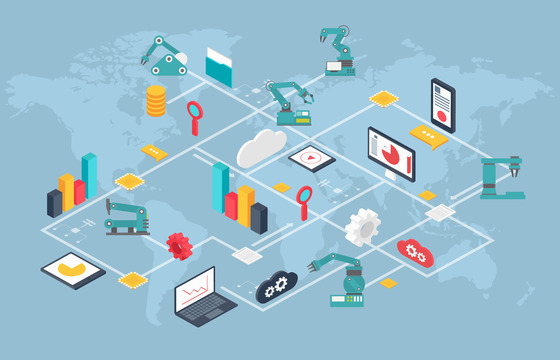
Call it the Internet of Things (IoT), machine data or sensor driven analytics, but the world has an untapped natural resource, a rich seam of data that can transform every aspect of operational performance.
The challenge is to effectively access the resource of machines that pre-date IoT concepts, and deliver tangible value not only to individual businesses but to the wider economy. Right now, however, companies are being asked to shoe-horn IoT into the existing cloud based technology infrastructures, citing the benefits of centrally managed big data analytics. Yet while pattern matching and big data trending will without doubt offer significant benefits through improved strategic decision making, this approach misses the real benefits of IoT – namely real-time, automated decision capabilities that respond to events to transform efficiency and cut costs.
For example, IMS Evolve is working with global retailers to harness sensor information from refrigeration and building management systems, legacy equipment and many other machine types, through the combination of edge based analytics, bespoke integration strategies and real time decision capabilities. The results have shown massive reductions in food waste and comprehensive energy management strategies incorporating an exciting new range of different metrics.
This business transformation requires the management of millions of dynamic data points collected from thousands of locations every minute of every day. By creating genuine analytics, the retailers can understand the underlying condition of each machine’s contribution, and through continual assessment ensure performance is not compromising food quality or the customer experience.
It is clearly not realistic to attempt to re-locate such huge volumes of data across corporate networks to house it centrally in a data cloud. Existing networks would have to be massively upgraded if the organisation was to avoid critical issues such as data gravity and data latency that could affect key corporate processes.
Instead, enhancing the existing infrastructure with an IoT software layer creates processing capacity at the source. Decisions are made and executed at the edge, in context with other local data if required, and only the actionable insight shared with the central resource. This approach is cost effective: there is no requirement for prohibitive infrastructure investments and organisations can build in local rules that reflect the specific demands of the environment to further refine operations. It is this local analytic and diagnostic capability that is key to delivering the operational benefits that can be enabled by IoT.
Real-Time Execution
The value of this real-time activity extends far beyond the financial benefits derived by a single organisation. Indeed, it is the collaborative potential offered by IoT that is so compelling on a macroeconomic level – from reducing food waste to transforming energy consumption. Collaborations between energy producers and energy consumers, for example, can support highly sophisticated demand response models that will be key to reducing consumption and building flexibility into the UK’s ageing power network.
By changing the profile of energy consumption in any given physical location or asset to respond to the overall capacity within the Grid, whilst still ensuring devices are operating efficiently, organisations have the chance to reduce consumption and become easier to supply resulting in reduced power costs. This potential is recognised at national level, with IMS Evolve currently leading a project co-funded by Innovate UK within the cold chain, which consumes 15% of the UK’s entire energy production.
With the practical application of the IoT we are transforming essential operations and creating new business models. It is by leveraging real-time machine data to reduce energy consumption, manage waste and transform the cost of asset ownership that both businesses and governments will attain tangible, long term value from this new, essential data resource.